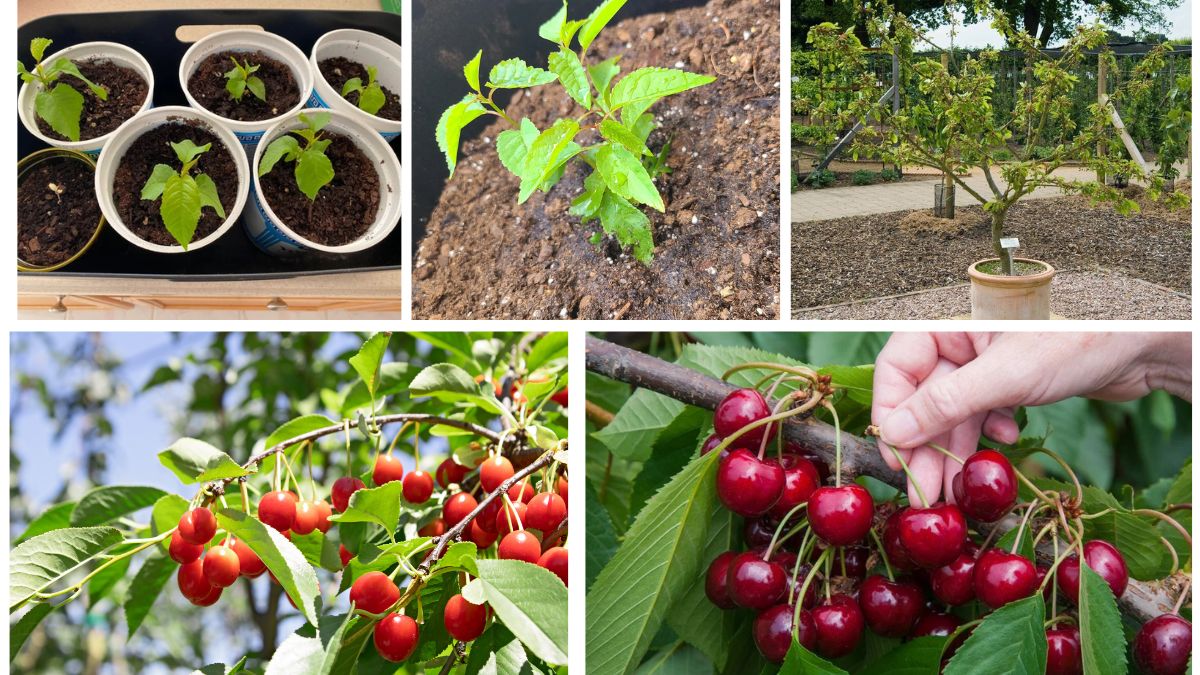Cherry trees are among the most beloved fruit trees, valued for their delicate, sweet fruits and stunning spring blossoms. While many people buy young trees from nurseries, growing a cherry tree from seed can be a rewarding experience for gardeners, horticulture students, and fruit enthusiasts alike. Though it requires patience and proper care, planting cherry seeds provides insight into tree development, propagation, and the life cycle of fruit-bearing plants. This guide will take you through a step-by-step process to plant cherry seeds and grow your own fruit trees.
Introduction to Cherry Trees
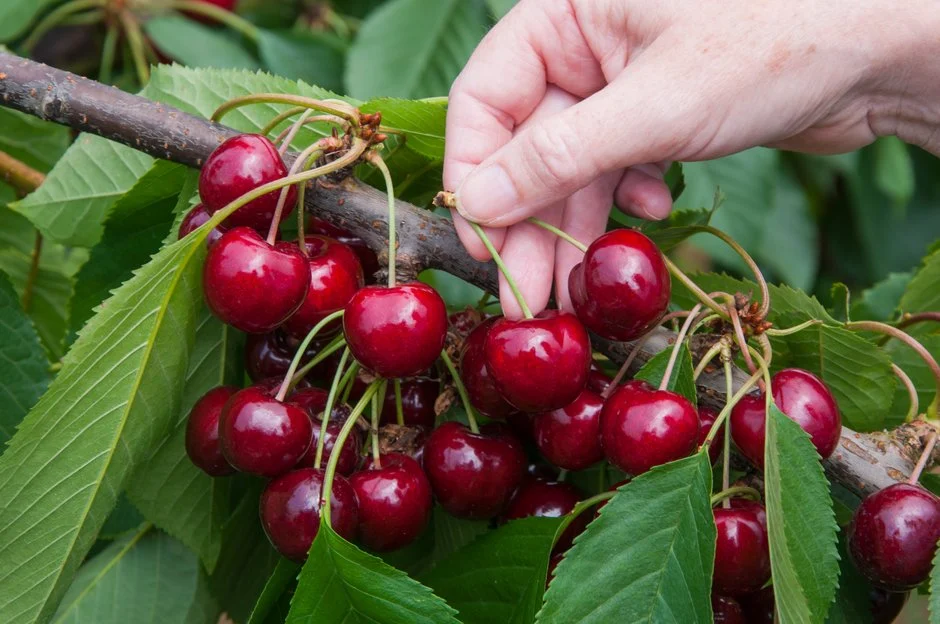
Cherries belong to the genus Prunus, which includes sweet cherries (Prunus avium) and sour cherries (Prunus cerasus). Native to regions of Europe and Asia, cherry trees have been cultivated for centuries for their flavorful fruits and ornamental beauty.
Planting cherry seeds is not only a cost-effective way to grow a tree but also an educational journey, giving gardeners the opportunity to observe germination, root development, and sapling growth. While fruiting may take several years, the process is immensely satisfying and provides a long-term source of delicious cherries and springtime beauty.
Step 1: Selecting and Preparing Cherry Seeds
The first step is obtaining healthy cherry seeds:
- Choose ripe cherries – Select sweet or sour cherries that are fully ripened and free from disease or damage.
- Extract the seeds – Remove the flesh carefully by washing the cherries in water. You can use a spoon or your fingers to avoid damaging the seed inside.
- Clean the seeds – Ensure all fruit residue is removed to prevent mold or rot during the germination process.
- Inspect seeds – Only use firm, undamaged seeds for planting.
Tip: Do not try to plant seeds directly without cold stratification; cherry seeds require a period of cold treatment to break dormancy and trigger germination.
Step 2: Cold Stratification
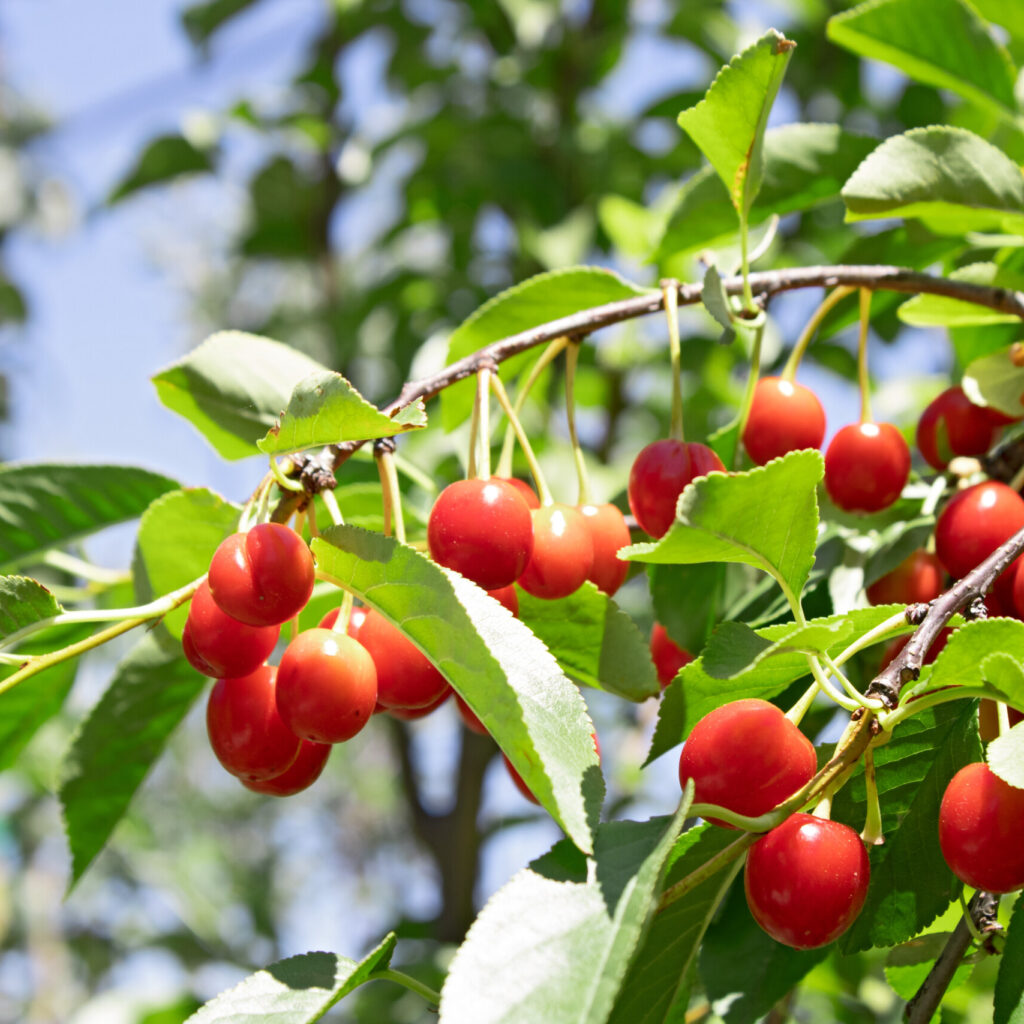
Cherry seeds are dormant when first extracted, and cold stratification mimics winter conditions to prepare them for germination.
Steps:
- Place the cleaned seeds in a damp paper towel or sand.
- Put the seeds in a sealed plastic bag.
- Refrigerate for 10–12 weeks at 34–40°F (1–4°C).
- Check occasionally to ensure the medium stays slightly damp, not wet.
After stratification, the seeds will be ready to germinate when planted in soil.
Step 3: Choosing the Right Location
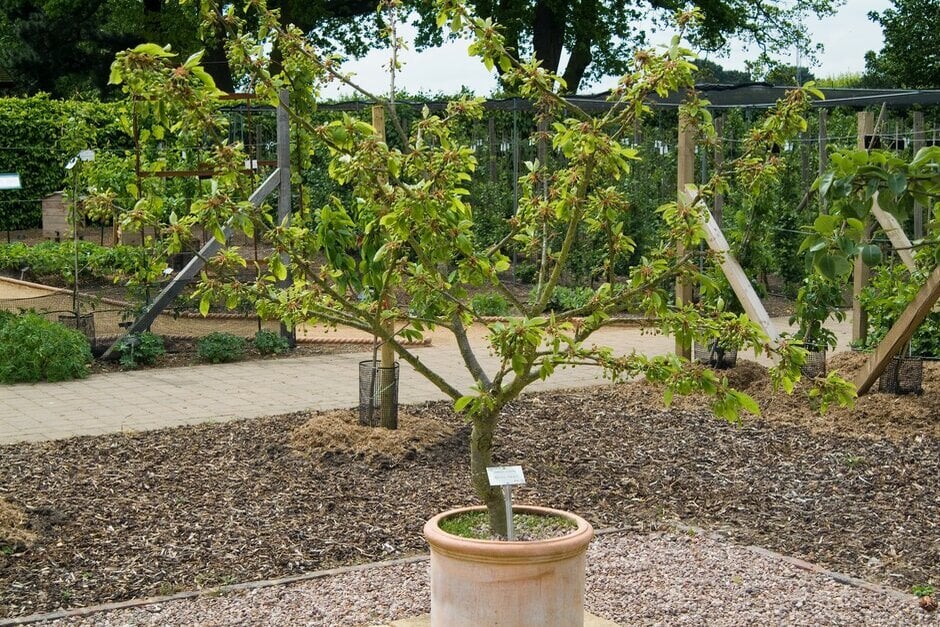
Cherry trees require proper sunlight, soil, and drainage to thrive:
- Sunlight: Full sun is ideal—at least 6–8 hours of direct sunlight daily.
- Soil: Well-draining, fertile soil with a pH of 6–7 is optimal. Avoid heavy clay or waterlogged areas.
- Space: Cherry trees can grow 15–25 feet tall; ensure adequate spacing if planting multiple trees.
Tip: If growing indoors or in a colder climate, consider starting seeds in pots or containers that can later be transplanted outdoors.
Step 4: Planting Cherry Seeds
Once the seeds have completed cold stratification, it’s time to plant:
- Fill small pots with well-draining potting mix, preferably a mix of garden soil, sand, and compost.
- Plant the seed 1–2 inches deep with the pointed end facing upward.
- Water lightly, keeping the soil consistently moist but not waterlogged.
- Place the pots in a warm, bright area, ideally around 65–70°F (18–21°C).
Germination may take 2–4 weeks, so patience is key.
Step 5: Caring for Cherry Seedlings
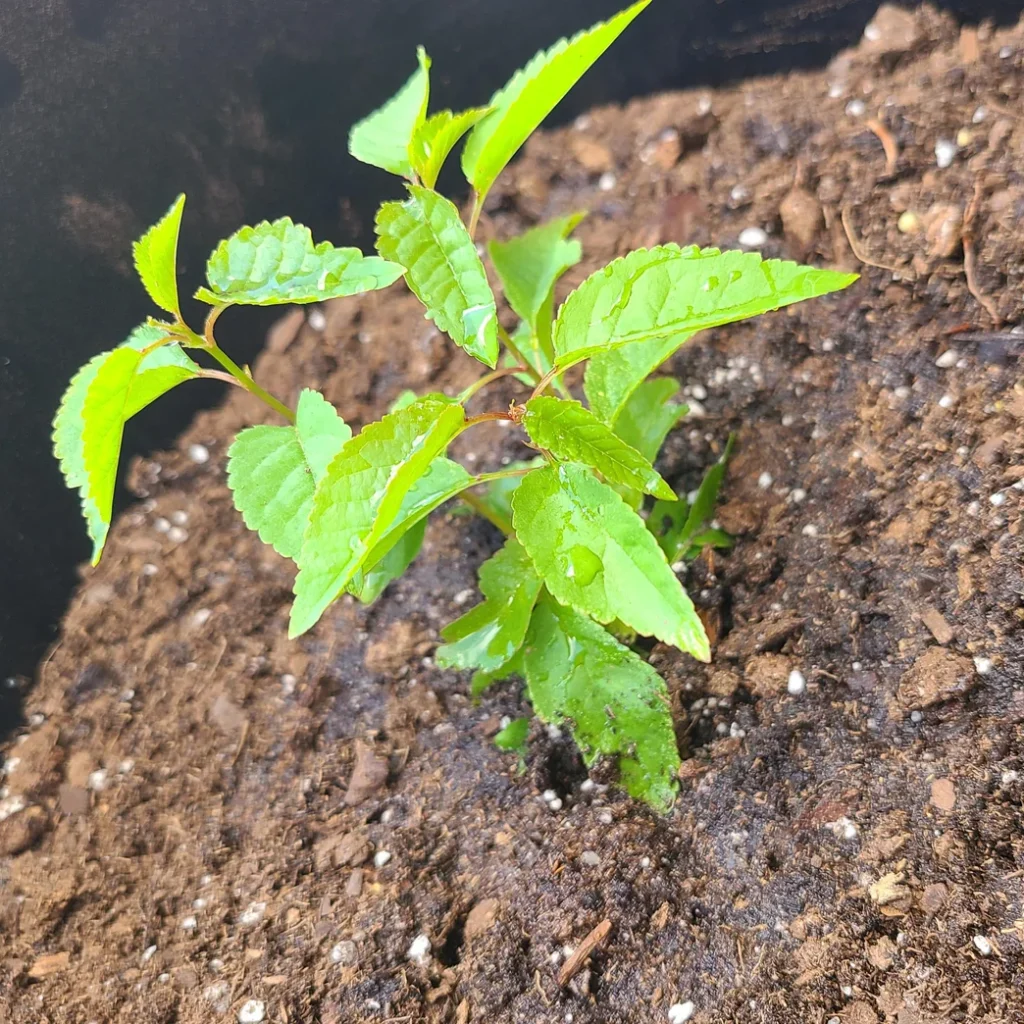
Proper care during the seedling stage ensures healthy growth:
Watering
- Keep the soil moist but avoid overwatering, which can cause root rot.
- Reduce watering slightly once seedlings develop strong roots and leaves.
Light
- Provide bright, indirect sunlight for indoor seedlings.
- If outdoors, ensure young seedlings are protected from harsh midday sun.
Temperature and Humidity
- Maintain a moderate temperature of 65–75°F (18–24°C) for optimal growth.
- Average humidity is sufficient; avoid overly damp conditions that encourage fungal growth.
Fertilization
- Once seedlings develop their second set of true leaves, begin using a diluted balanced fertilizer every 2–3 weeks to support growth.
Step 6: Transplanting Seedlings Outdoors
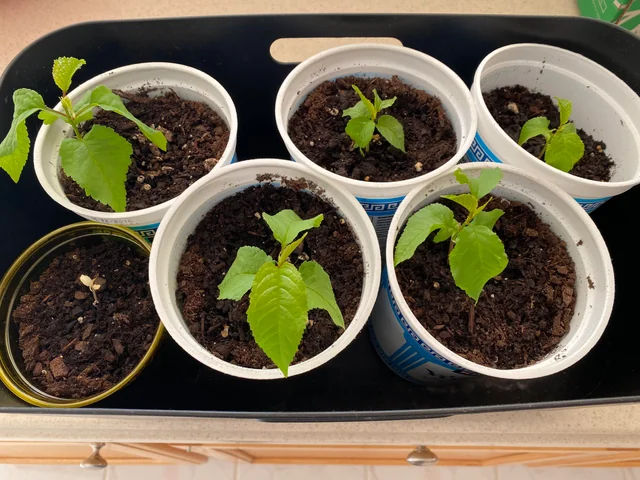
Once seedlings are 6–12 inches tall and have a strong root system:
- Harden off the seedlings by gradually exposing them to outdoor conditions over 7–10 days.
- Choose a sunny location with fertile, well-draining soil.
- Dig a hole twice as wide and slightly deeper than the root ball.
- Carefully transplant the seedling and backfill with soil.
- Water thoroughly and mulch around the base to retain moisture.
Tip: Protect young trees from pests, deer, or extreme weather using fencing or netting.
Step 7: Long-Term Care of Cherry Trees
Cherry trees require ongoing care to thrive and eventually bear fruit:
Watering
- Young trees need regular watering, especially during dry periods.
- Mature trees are more drought-tolerant but benefit from deep watering during fruiting season.
Fertilization
- Apply a balanced, slow-release fertilizer in early spring and mid-summer.
- Avoid over-fertilizing, which can lead to excessive leaf growth at the expense of fruit production.
Pruning
- Prune in late winter or early spring to remove dead or crossing branches.
- Maintain a strong, open canopy to allow sunlight and air circulation.
Pest and Disease Management
- Monitor for aphids, caterpillars, and fungal diseases such as cherry leaf spot or powdery mildew.
- Use organic or chemical controls as necessary, following safety instructions.
Step 8: Flowering and Fruiting
- Cherry trees grown from seed may take 3–7 years to bear fruit, depending on variety and growing conditions.
- Flowers appear in spring, followed by green fruit that gradually ripens in early summer.
- Sweet cherries generally need cross-pollination, so planting multiple compatible varieties increases fruit yield.
Step 9: Harvesting Cherries
- Harvest cherries when fully colored, firm, and sweet.
- Pick fruit carefully to avoid damaging branches or unripe cherries.
- Enjoy fresh cherries, or preserve them by freezing, canning, or making jams.
Step 10: Propagation for Multiple Trees
- From Seed: Continue the process to grow more trees.
- From Grafting: For faster fruiting, graft seedlings onto mature cherry rootstocks.
- From Cuttings: Some cherry varieties can also be propagated via hardwood cuttings or layering.
Common Problems and How to Solve Them
- Poor Germination – Ensure seeds undergo proper cold stratification and are planted in warm, moist soil.
- Yellow Leaves – May indicate overwatering or nutrient deficiency; adjust watering and fertilize.
- Slow Growth – Ensure sufficient sunlight and proper soil nutrition.
- Pests – Aphids, caterpillars, or fungal infections; use appropriate organic or chemical control methods.
Benefits of Growing Cherry Trees from Seed
- Cost-Effective – No need to buy saplings; a single cherry fruit can produce multiple trees over time.
- Educational – Excellent for understanding seed germination, plant development, and tree physiology.
- Ornamental Value – Cherry blossoms provide aesthetic beauty in spring.
- Fresh Fruits – Homegrown cherries are fresher and tastier than store-bought ones.
Even if fruit production takes years, cherry trees offer greenery, shade, and ornamental blooms that enhance gardens and landscapes.
Conclusion
Growing cherry trees from seeds is a patient but rewarding process that combines education, gardening skills, and the joy of nurturing life. By carefully selecting seeds, applying cold stratification, germinating, and providing proper care for seedlings and young trees, you can enjoy both the ornamental beauty and eventual harvest of homegrown cherries.
With ongoing care, protection from pests, and attention to sunlight and watering, cherry trees can thrive for decades, producing fruit and blooms that bring joy year after year. Starting from a humble seed, you can cultivate a tree that becomes a centerpiece of your garden and a source of delicious, nutritious cherries.
